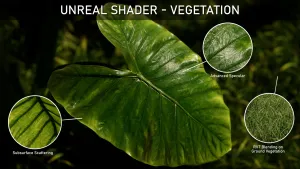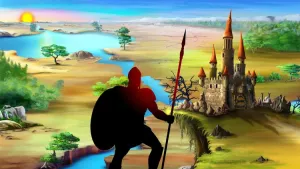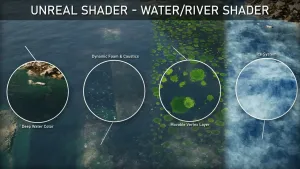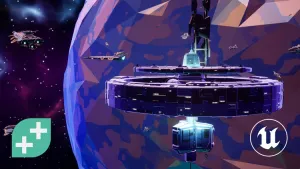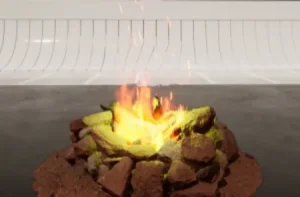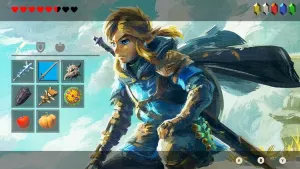What You Will Learn
- Two main shaders: one for bark/leaves assets and another for ground vegetation
- Property parameters: color, normals, roughness, specular, and ambient occlusion strength
- Subsurface scattering: with custom color and intensity control
- Billboard logic: exclusive to Speedtree
- Two different wind effects: one for non-Speedtree assets, another for Speedtree’s native wind effect (not supporting .st9 format)
- RVT blending: achieving perfect transitions between terrain and vegetation
Requirements
- A computer equipped with Windows 10 (64-bit) OS (not tested on Windows 11 or Mac)
- Use WinRAR or 7zip to decompress files
- Basic knowledge of Unreal Engine 5 (e.g., camera operations, creating materials, importing assets, etc.)
Description
In this course, I will guide you step-by-step to create vegetation shaders from scratch. For vegetation models, shaders are the most critical factor compared to any other model type. Therefore, we will deeply explore how to make the most out of each property.
What will you learn?
- We start with the base color and introduce a custom function that allows you to control saturation, brightness, contrast, and hue.
- To maximize the potential of each model, we will learn how to use transparency masks (also known as “Alpha”).
- Normal maps are key to highlighting all the details, and we will add this feature and set parameters to control its intensity.
- The equally important specular effect, responsible for reflecting light off the model, will be combined with the Fresnel effect to focus it more in the light direction. Additionally, we will control roughness to determine whether the model appears dry or wet.
- For dim environments, adding parameters to control emissive properties will be very useful.
- On top of all other properties, subsurface scattering allows light to penetrate the model, making the vegetation look more realistic. We will learn how to achieve this effect and control its color and intensity independently.
- After setting up the vegetation options, we will explore how to add necessary features to tree trunks, which will automatically disable unnecessary options for such models, like subsurface scattering.
- For Speedtree only, we will demonstrate how to activate custom functions by simply checking a box to maximize the billboard effect.
- Considering not everyone uses Speedtree, we will learn how to create advanced wind effects for non-Speedtree assets. Of course, we will also implement Speedtree’s wind effects, but only supporting the .st format.
- inally, because it can dramatically change the outcome, we will use Runtime Virtual Texture (RVT) and blending features to learn how to create perfect transitions between terrain and vegetation.
Important Note: This course is based on Unreal Engine version 5.2. It is strongly recommended to use the same version for learning! Using other versions may result in potential errors not covered in this course.
Who This Course Is For:
- Anyone who wants to learn, improve, or enhance their environment creation skills.
Click the button below to download.
